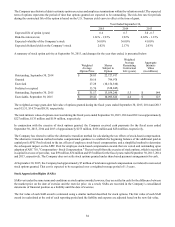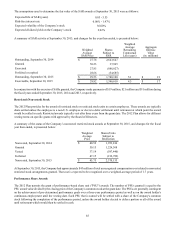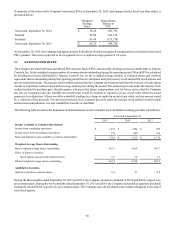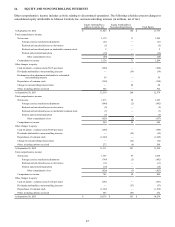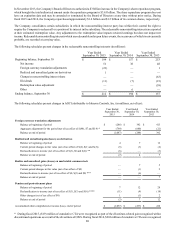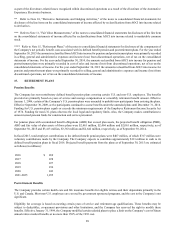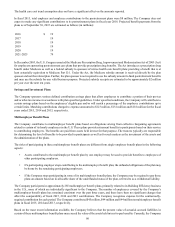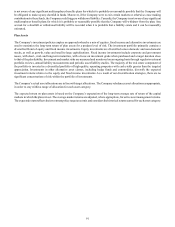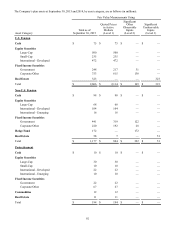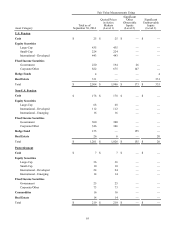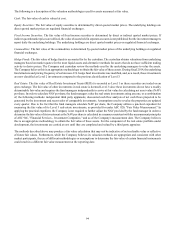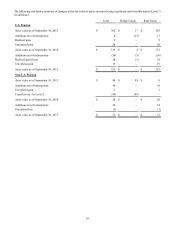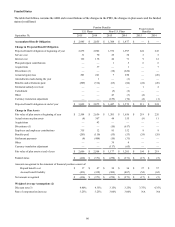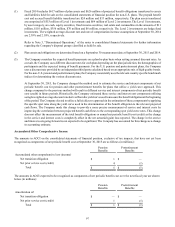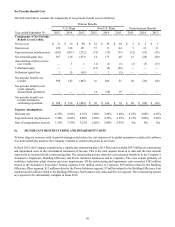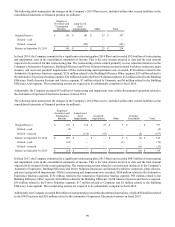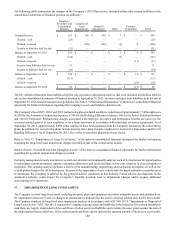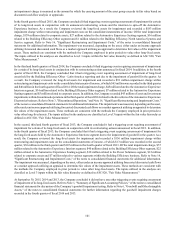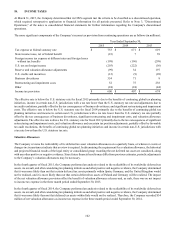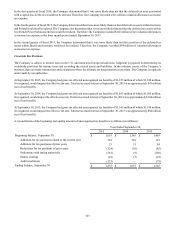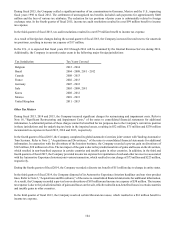Johnson Controls 2015 Annual Report Download - page 94
Download and view the complete annual report
Please find page 94 of the 2015 Johnson Controls annual report below. You can navigate through the pages in the report by either clicking on the pages listed below, or by using the keyword search tool below to find specific information within the annual report.94
The following is a description of the valuation methodologies used for assets measured at fair value.
Cash: The fair value of cash is valued at cost.
Equity Securities: The fair value of equity securities is determined by direct quoted market prices. The underlying holdings are
direct quoted market prices on regulated financial exchanges.
Fixed Income Securities: The fair value of fixed income securities is determined by direct or indirect quoted market prices. If
indirect quoted market prices are utilized, the value of assets held in separate accounts is not published, but the investment managers
report daily the underlying holdings. The underlying holdings are direct quoted market prices on regulated financial exchanges.
Commodities: The fair value of the commodities is determined by quoted market prices of the underlying holdings on regulated
financial exchanges.
Hedge Funds: The fair value of hedge funds is accounted for by the custodian. The custodian obtains valuations from underlying
managers based on market quotes for the most liquid assets and alternative methods for assets that do not have sufficient trading
activity to derive prices. The Company and custodian review the methods used by the underlying managers to value the assets.
The Company believes this is an appropriate methodology to obtain the fair value of these assets. During fiscal 2014, the underlying
fund structure and pricing frequency of certain non-U.S. hedge fund investments was modified, and, as a result, those investments
are now classified as Level 2 investments compared to the previous classification of Level 3.
Real Estate: The fair value of Real Estate Investment Trusts (REITs) is recorded as Level 1 as these securities are traded on an
open exchange. The fair value of other investments in real estate is deemed Level 3 since these investments do not have a readily
determinable fair value and requires the fund managers independently to arrive at fair value by calculating net asset value (NAV)
per share. In order to calculate NAV per share, the fund managers value the real estate investments using any one, or a combination
of, the following methods: independent third party appraisals, discounted cash flow analysis of net cash flows projected to be
generated by the investment and recent sales of comparable investments. Assumptions used to revalue the properties are updated
every quarter. Due to the fact that the fund managers calculate NAV per share, the Company utilizes a practical expedient for
measuring the fair value of its Level 3 real-estate investments, as provided for under ASC 820, "Fair Value Measurement." In
applying the practical expedient, the Company is not required to further adjust the NAV provided by the fund manager in order to
determine the fair value of its investment as the NAV per share is calculated in a manner consistent with the measurement principles
of ASC 946, "Financial Services - Investment Companies," and as of the Company's measurement date. The Company believes
this is an appropriate methodology to obtain the fair value of these assets. For the component of the real estate portfolio under
development, the investments are carried at cost until they are completed and valued by a third party appraiser.
The methods described above may produce a fair value calculation that may not be indicative of net realizable value or reflective
of future fair values. Furthermore, while the Company believes its valuation methods are appropriate and consistent with other
market participants, the use of different methodologies or assumptions to determine the fair value of certain financial instruments
could result in a different fair value measurement at the reporting date.


